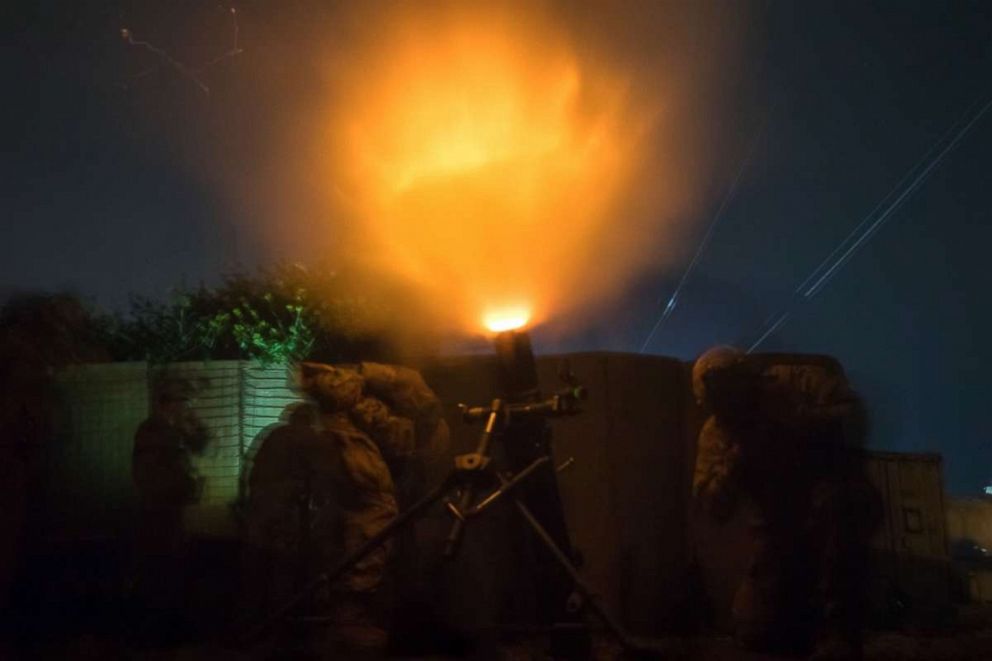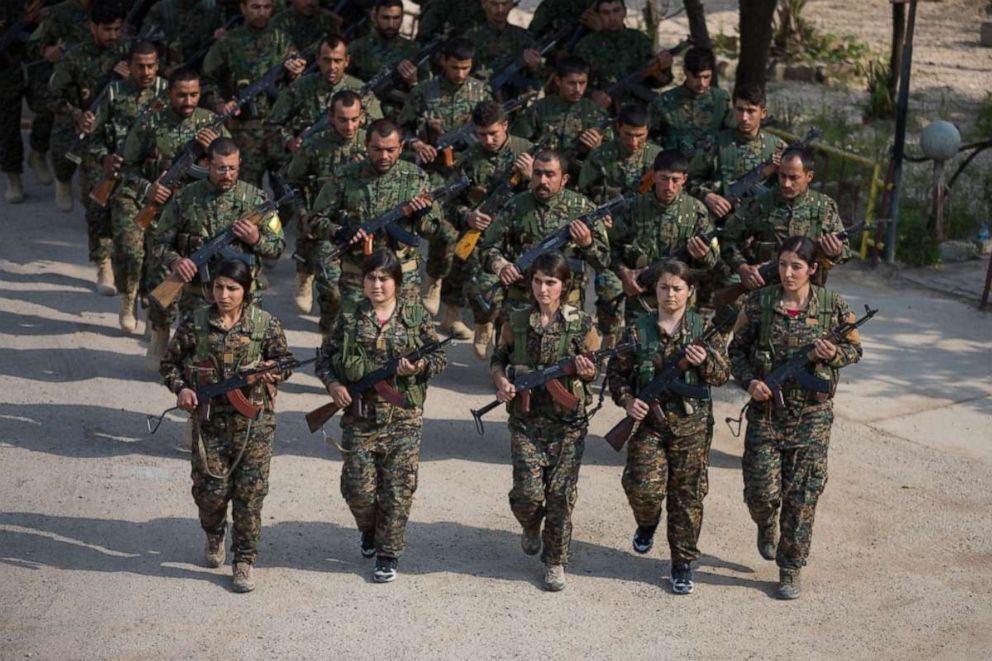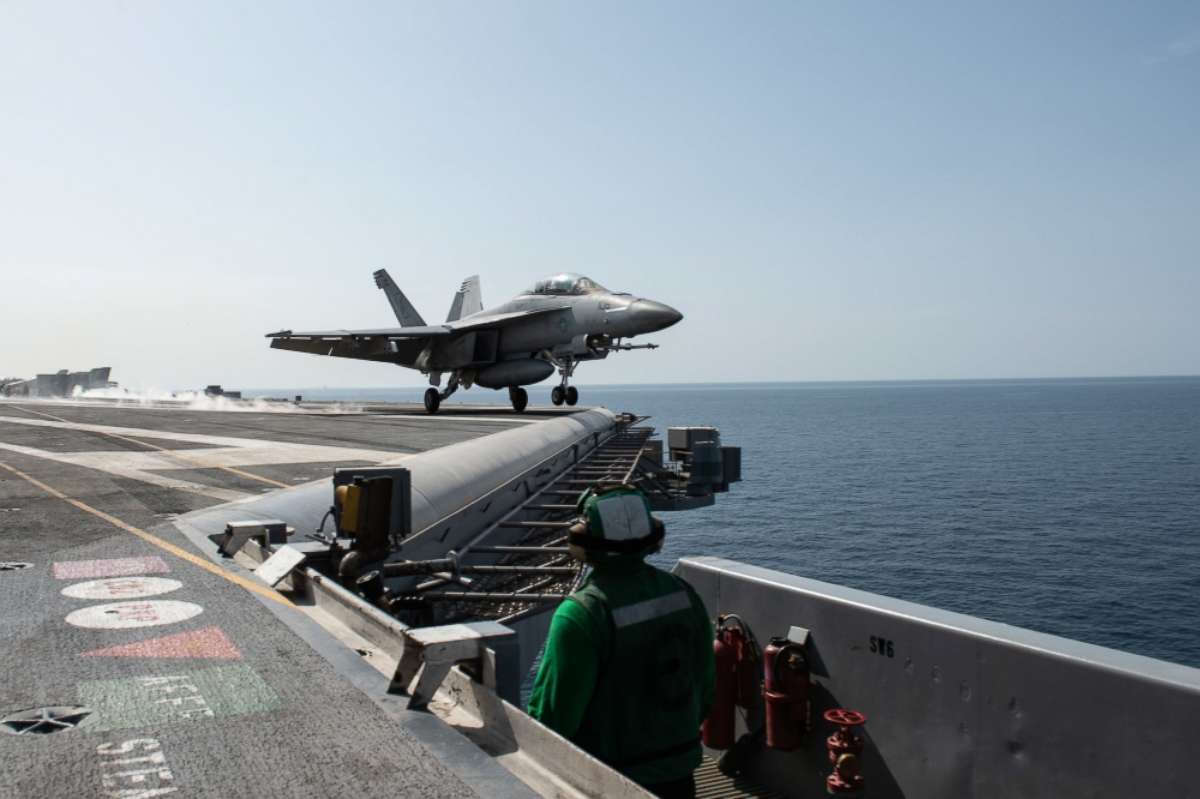Fight against ISIS continues in Iraq and Syria, despite declaration of victory
Following the victory declaration, the coalition conducted 52 strikes.
The U.S.-led coalition's fight against the Islamic State in Iraq and Syria is not over, despite a declaration of victory against the group's last remaining stronghold in eastern Syria last month.
In the week following the March 23 victory declaration by Syrian and Kurdish partner forces, the coalition conducted 52 strikes in Iraq and Syria, according to a statement released by the coalition on Wednesday.
Between March 24 and April 6, the coalition struck 28 ISIS tactical units and destroyed 72 vehicles, 17 fighting positions, 15 supply routes and three vehicles borne improvised explosive devices in Syria. During that same time period, the coalition struck three ISIS tactical units and destroyed seven tunnels, four supply routes, two buildings, two caves, one command and control center and one compound in Iraq.
"While the completion of territorial liberation is a major milestone, we will continue to work by, with, and through our partners in Iraq and Syria to deny ISIS the opportunity to re-emerge," Pentagon spokesperson Cmdr. Sean Robertson told ABC News.

He said Syrian and Kurdish partner forces continue to conduct back clearance operations -- or double checking areas already believed to be swept of militants -- and eliminating any remaining ISIS weapons caches.
"This back-clearance operation will be deliberate and thorough and help ensure the long-term security for the area," Robertson said.
Despite the territorial defeat of a terror group that once controlled about 34,000 square miles of land, U.S. officials estimate there could be tens of thousands of ISIS fighters still in the region.
Last month, the then-head of U.S. forces in the Middle East warned against the "calculated" retreat of ISIS fighters from their last stronghold in Baghouz, saying the exodus of thousands is not a surrender, but a decision to retreat to camps and remote areas in the region until they can reconstitute as a violent extremist organization once again.

"We will see low-level attacks, we'll see assassinations, we'll see IED attacks, we'll see ambush type things as they begin to emerge from this. What our focus has to be is working with our partners," Gen. Joseph Votel told the House Armed Services Committee on March 7. "We're going to have to keep pressure on this."
In Iraq, where the military declared liberation from ISIS in December 2017, the terror group has already established sanctuaries, according to a report released last month by the Institute for the Study of War, "setting the conditions for future offensive operations against the Government of Iraq."

"The U.S. and its partners should not view the current relative security in Baghdad as confirmation of the defeat of ISIS," the Institute for the Study of War wrote. "The U.S. Anti-ISIS Coalition's strategy to enable Iraq to 'independently manage' an insurgency through intelligence support and other building partner capacity efforts will likely fail to prevent ISIS from regaining momentum based on its current trajectory in Iraq."
The U.S. is still planning to withdraw the majority of its troops from Syria, but will leave about 400 forces there to maintain stability as cities and towns work to recover from the ISIS fight that destroyed entire communities and left thousands dead. There about 5,000 U.S. troops still in Iraq, mainly working to train, advise, and assist the local Iraqi Security Forces.




